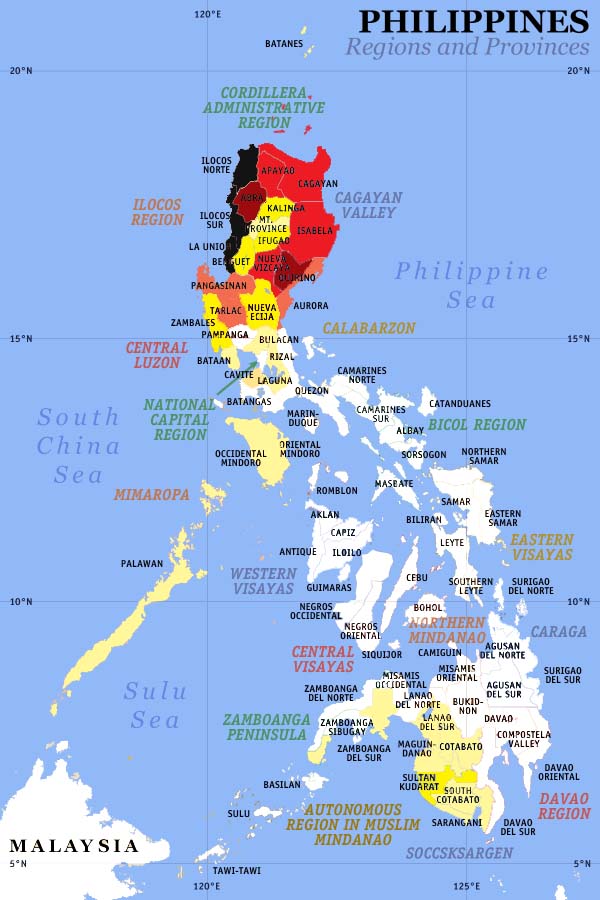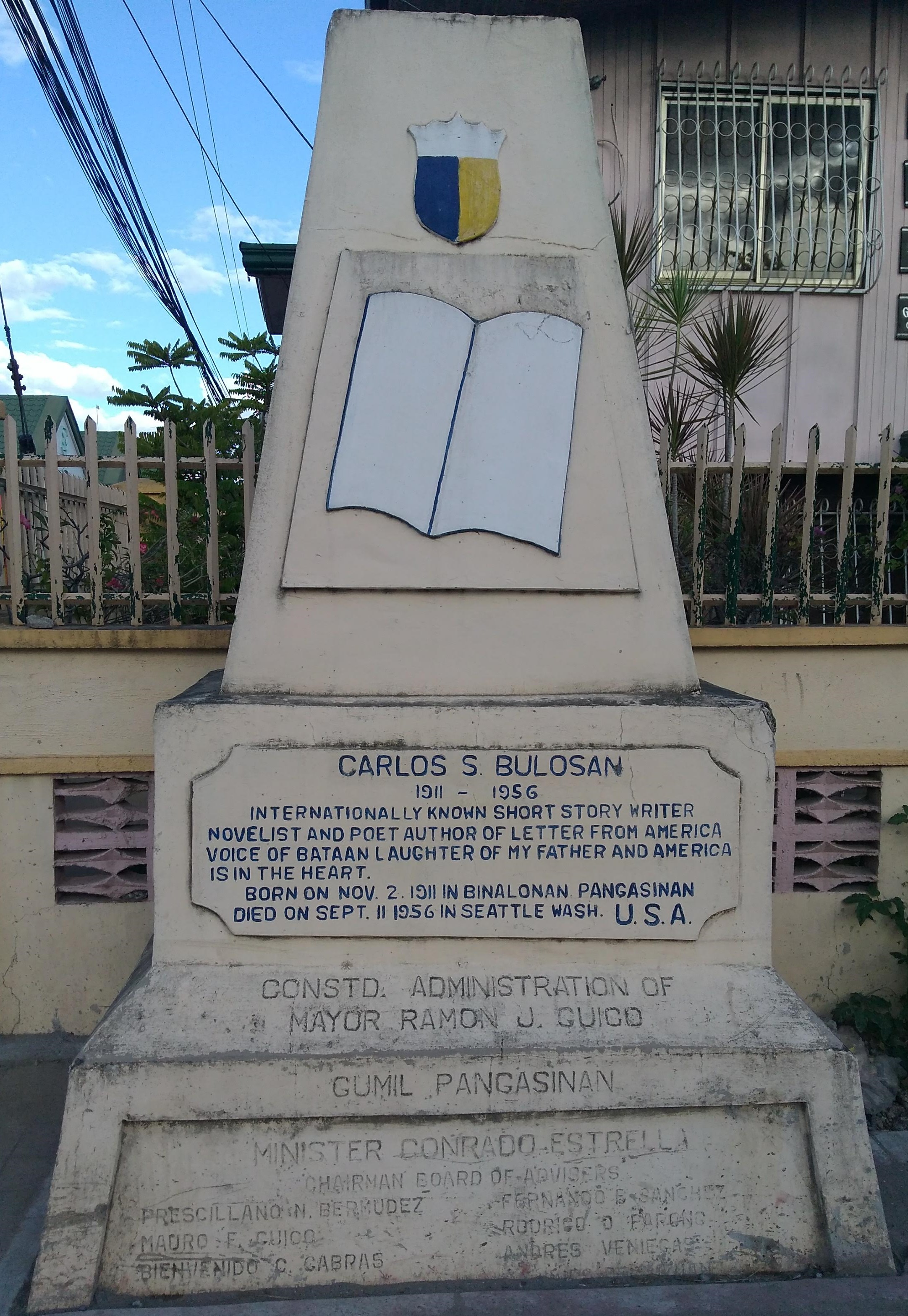|
Manong
Manong (Mah-noh-ng) is an Ilokano term principally given to the first-born male in a Filipino nuclear family. However, it can also be used to title an older brother, older male cousin, or older male relative in an extended family. The feminine "manang" is a term given to an older sister. It is a term of respect, similar but secondary to Dad or Mom, but not comparable to Mister or Ma'am, which expresses no elevated affection. A hierarchical marker, it is used to refer to any male who is older than the speaker within his or her family but it could also be used for men outside the family to convey respect. Additionally, the male partner of an older sibling may be referred to as a manong irrespective of the speaker's age relative to the partner (i.e., a male younger than the speaker may be called manong by virtue of status and not by age difference) although this is not always necessary. In traditional Filipino families, the manong acts as a third "parent" in the nuclear family and a ... [...More Info...] [...Related Items...] OR: [Wikipedia] [Google] [Baidu] |
|
|
Manong Generation
The manong generation were the first generation of Filipino immigrants to arrive ''en masse'' to the United States. They formed some of the first Little Manila communities in the United States, and they played a pivotal role in the farmworker movement. The term manong comes from the Ilocano word for "elder brother," while ''manang'' means "elder sister." History In 1898, the United States entered a roughly fifty year period of colonial control in the Philippines. The Spanish American War (April-August 1898) ended Spanish colonial rule in the region, and the Philippines were ceded to the US in the Treaty of Paris. This was followed by the Philippine-American War (1899-1902), in which Filipino independence fighters, led by Emilio Aguinaldo, fought against American forces. The war was brutal, and total of 200,000 Filipino civilians died. Meanwhile, the US government, under William Howard Taft, launched a pacification campaign to win over support from Filipino elites, in 1900 ... [...More Info...] [...Related Items...] OR: [Wikipedia] [Google] [Baidu] |
|
|
Bienvenido Santos
Bienvenido N. Santos (March 22, 1911 – January 7, 1996) was a Filipino-American fiction, poetry and nonfiction writer. He was born and raised in Tondo, Manila. His family roots are originally from Lubao, Pampanga, Philippines. He lived in the United States for many years where he is widely credited as a pioneering Asian-American writer. Biography Santos received his Bachelor of Arts degree from the University of the Philippines where he first studied creative writing under Paz Marquez Benitez. In 1941, Santos was a government '' pensionado'' (scholar) to the United States at the University of Illinois, Columbia University, and Harvard University. He had arrived in San Francisco on October 12, 1941, aboard the leaving his wife and three daughters in the Philippines. When war in the Pacific came to the Philippines on December 8 (December 7 Hawaii time) he feared he would never see his family again—a reality that "not only interrupted his study of realism; it was overwhelming ... [...More Info...] [...Related Items...] OR: [Wikipedia] [Google] [Baidu] |
|
 |
Ilokano Language
Ilocano (also Ilokano; ; Ilocano: ) is an Austronesian language spoken in the Philippines, primarily by Ilocano people and as a lingua franca by the Igorot people and also by the native settlers of Cagayan Valley. It is the Languages of the Philippines, third most-spoken native language in the country. As an Austronesian language, it is related to Malay language, Malay (Indonesian language, Indonesian and Malaysian language, Malaysian), Tetum, Chamorro language, Chamorro, Fijian language, Fijian, Māori language, Māori, Hawaiian language, Hawaiian, Samoan language, Samoan, Tahitian language, Tahitian, Paiwan language, Paiwan, and Malagasy language, Malagasy. It is closely related to some of the other Austronesian languages of Northern Luzon, and has slight mutual intelligibility with the Balangao language and the eastern dialects of the Bontoc language. The Ilokano people had their indigenous writing system and script known as Baybayin, ''kur-itan''. There have been proposals ... [...More Info...] [...Related Items...] OR: [Wikipedia] [Google] [Baidu] |
 |
Tagalog Language
Tagalog (, ; ; ''Baybayin'': ) is an Austronesian languages, Austronesian language spoken as a first language by the ethnic Tagalog people, who make up a quarter of the population of the Philippines, and as a second language by the majority. Its Standard language, standardized form, official language, officially named Filipino language, ''Filipino'', is the national language of the Philippines, and is one of two official languages, alongside Philippine English, English. Tagalog is closely related to other Philippine languages, such as the Bikol languages, Ilocano language, Ilocano, the Bisayan languages, Kapampangan language, Kapampangan, and Pangasinan language, Pangasinan, and more distantly to other Austronesian languages, such as the Formosan languages of Taiwan, Indonesian language, Indonesian, Malay language, Malay, Hawaiian language, Hawaiian, Māori language, Māori, and Malagasy language, Malagasy. Classification Tagalog is a Central Philippine languages, Central Phi ... [...More Info...] [...Related Items...] OR: [Wikipedia] [Google] [Baidu] |
 |
Carlos Bulosan
Carlos Sampayan Bulosan (November 24, 1913 – September 11, 1956) was an English-language Filipino novelist and poet who immigrated to America on July 1, 1930. He never returned to the Philippines and he spent most of his life in the United States. His best-known work today is the semi-autobiographical '' America Is in the Heart'', but he first gained fame for his 1943 essay on '' The Freedom from Want''. Early life and immigration Bulosan was born to Ilocano parents in the Philippines in Binalonan, Pangasinan. There is considerable debate around his actual birth date, as he himself used several dates. 1911 is generally considered to be the most reliable answer, based on his baptismal records, but according to the late Lorenzo Duyanen Sampayan, his childhood playmate and nephew, Carlos was born on November 2, 1913. Most of his youth was spent in the countryside as a farmer. It is during his youth that he and his family were economically impoverished by the rich and political ... [...More Info...] [...Related Items...] OR: [Wikipedia] [Google] [Baidu] |
|
America Is In The Heart
''America Is in the Heart'', sometimes subtitled ''A Personal History'', is a 1946 semi-autobiographical novel written by Filipino American immigrant poet, fiction writer, short story teller, and activist, Carlos Bulosan."America Is in the Heart: A Personal History" by Carlos Bulosan (Introduction by Carey McWilliams) , University of Washington Press, washington.edu The novel was one of the earliest published books that presented the experiences of the immigrant and working class based on an point of view and has been regarded as " [...More Info...] [...Related Items...] OR: [Wikipedia] [Google] [Baidu] |